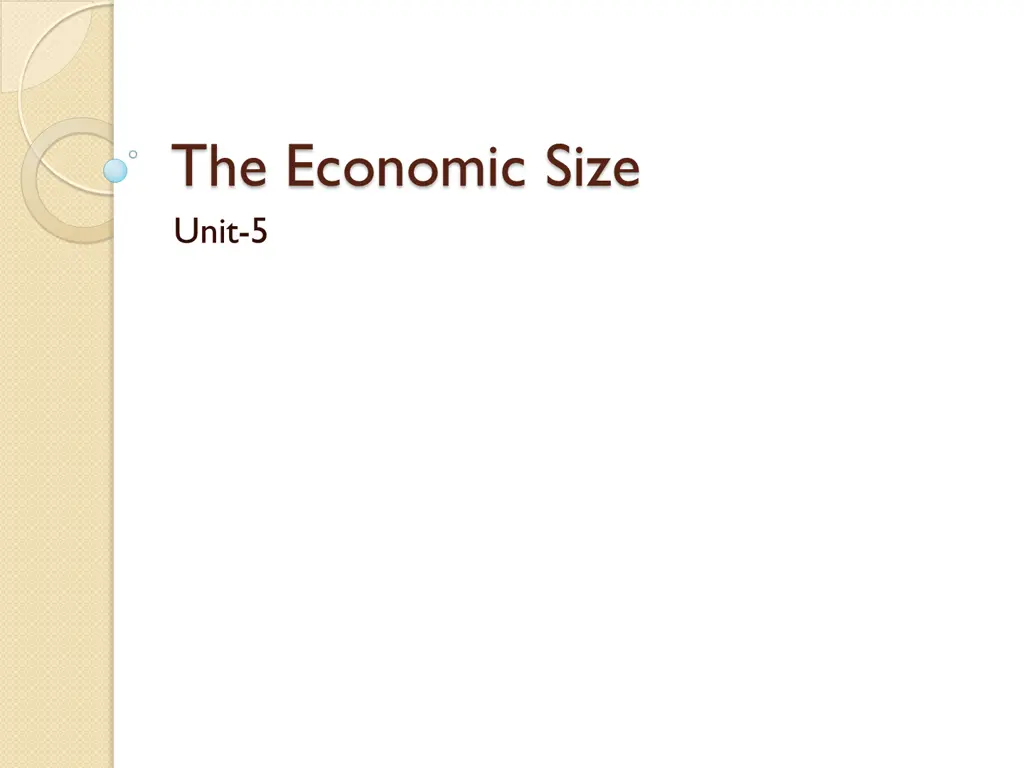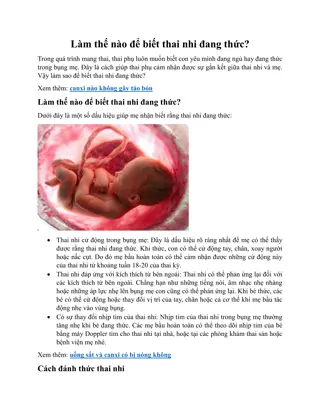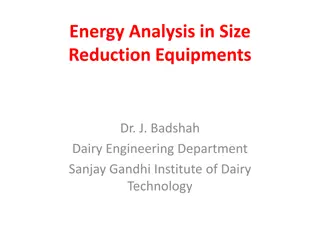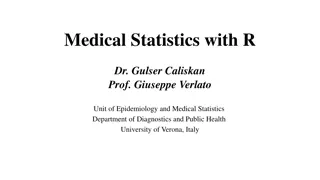The Economic Size
Economies of scale and how it can benefit businesses. Learn about the different types of economies of scale and their effects on production costs. Discover the sources that can help achieve economies of scale.
Download Presentation

Please find below an Image/Link to download the presentation.
The content on the website is provided AS IS for your information and personal use only. It may not be sold, licensed, or shared on other websites without obtaining consent from the author.If you encounter any issues during the download, it is possible that the publisher has removed the file from their server.
You are allowed to download the files provided on this website for personal or commercial use, subject to the condition that they are used lawfully. All files are the property of their respective owners.
The content on the website is provided AS IS for your information and personal use only. It may not be sold, licensed, or shared on other websites without obtaining consent from the author.
E N D
Presentation Transcript
The Economic Size Unit-5
What are Economies of Scale? Economies of scale refer to the cost advantage experienced by a firm when it increases its level of output. The advantage arises due to the inverse relationship between per-unit fixed cost and the quantity produced. The greater the quantity of output produced, the lower the per-unit fixed cost. Economies of scale also result in a fall in average variable costs (average non-fixed costs) with an increase in output. This is brought about by operational efficiencies and synergies as a result of an increase in the scale of production.
Economies of Scale Economies of scale can be realized by a firm at any stage of the production process. In this case, production refers to the economic concept of production and involves all activities related to the commodity, not involving the final buyer. Thus, a business can decide to implement economies of scale in its marketing division by hiring a large number of marketing professionals. A business can also adopt the same in its input sourcing division by moving from human labor to machine labor.
Effects of Economies of Scale on Production Costs It reduces the per-unit fixed cost. As a result of increased production, the fixed cost gets spread over more output than before. It reduces per-unit variable costs. This occurs as the expanded scale of production increases the efficiency of the production process.
Effects of Economies of Scale on Production Costs
Types of Economies of Scale 1. Internal Economies of Scale This refers to economies that are unique to a firm. For instance, a firm may hold a patent over a mass production machine, which allows it to lower its average cost of production more than other firms in the industry. 2. External Economies of Scale These refer to economies of scale enjoyed by an entire industry. For instance, suppose the government wants to increase steel production. In order to do so, the government announces that all steel producers who employ more than 10,000 workers will be given a 20% tax break. Thus, firms employing less than 10,000 workers can potentially lower their average cost of production by employing more workers. This is an example of an external economy of scale one that affects an entire industry or sector of the economy.
Sources of Economies of Scale 1. Purchasing Firms might be able to lower average costs by buying the inputs required for the production process in bulk or from special wholesalers. 2. Managerial Firms might be able to lower average costs by improving the management structure within the firm. The firm might hire better skilled or more experienced managers. 3. Technological A technological advancement might drastically change the production process. For instance, fracking completely changed the oil industry a few years ago. However, only large oil firms that could afford to invest in expensive fracking equipment could take advantage of the new technology.
Methods of Measuring Business Size The size of businesses always varies because of its nature. Some businesses are operated with a single person, some with less than 10 people while some businesses are operated with thousands of employees. There are a few methods that are used to measure the sizes of these businesses.
Methods of Measuring Business Size Number of Employees This is an easy method to know the size of any business. By knowing the number of employees, it also becomes possible to compare two or more businesses. Although there is a limitation in this method as some highly automated firms in manufacturing are producing high output levels with few employees while their profit is huge. It is also difficult in manufacturing units to count part-time workers, their wages and their output.
Methods of Measuring Business Size Value of Output The size of a business can be calculated through the value of output produced by that business. Like other methods, there is also a limitation in calculations of the volume and size of the business. For example, if there is firm producing high level and expensive computers which are used in big multinational organizations or computers for special purposes like for graphics, gaming, etc. may have more value of output with less production units while a firm may have more employees and more production facility but sell cheap computers for personal use and earns less so in this type of situation this method can t give you accurate results after measuring the size of business.
Methods of Measuring Business Size Value of Sales This method is mainly used while we measure the size of any retail business and particularly when we measure the size of two or more businesses serving in the same category and sell similar products like grocery stores. Similar to other methods, there are also limitations as it is very difficult to calculate the size of business when there is a difference in the nature of products. A grocery business even having many numbers of customers could earn less than a store that sells luxury and fashion brands.
Methods of Measuring Business Size Value of Capital Employed In this method, the total value invested in the business is calculated to calculate the size of the business. In this method, there is a similar limitation to the method of the number of employees. In this method, there is also difficult to calculate the business as there is a possibility of investing in different technologies in the same business. For example, if a business is still using labor-intensive technology and use more machinery and more labor while some other business may use modern technology and more automated machines. This business may earn more as there will be fewer employees to pay. On the other side, the other business which is using labor-intensive machinery will have much more load to pay salaries of workers.
The Concept of Optimum Firm in Economics! It is important to explain the concept of optimum firm. The optimum firm refers to the best or ideal size of the firm. More specifically optimum or best firm is considered as one that has set up a plant with lowest possible cost and is also operating it at its lowest average cost point. E.A.G. Robinson who has done a good deal of research on the issue of optimum firm writes, an optimum firm is the one which operates at the scale at which, in the existing conditions of technique and organising ability, has the lowest average cost of production when all those costs which must be covered in the long run are included .
The Concept of Optimum Firm in Economics! For any industry during a given period of time, there is a particular size of business unit which is found functioning somewhat more efficiently than a unit of slightly bigger or smaller size. This size is called the optimum size. It is at this point of size, called the optimum size point beyond which with any further expansion of size the law of decreasing return would start operating. As Loknathan wrote, In every industry, and for every method of production within each industry, there is more or less a fixed minimum size of plants below which production is technically impossible or economically unprofitable.
The Concept of Optimum Firm in Economics! So long as the firm has not reached that size it will continue growing. As Beacham wrote: In an ideal world all firms should grow upto the point at which they are making the most effective and economical use of productive resources. That is to say, all firms should expand until they reach their optimum size.
5 Factors for Determining the Optimum Size of a Business Unit 1. Optimum technical unit: Technical factors are concerned with methods of production. They may include specialization, division of labor, mechanization and the like. Production methods become economical when these steps are taken. Technical forces decide the minimum and the maximum limits to size.
5 Factors for Determining the Optimum Size of a Business Unit 2. Optimum Financial unit: Generally, the size of a unit depends upon the volume or size of capital and, in turn, the volume of capital depends on its size. Larger the size of a unit, larger the volume of capital required and easier to obtain capital because large volume of production and operational efficiency insure adequate return on capital. The optimum financial unit is governed by the volume of funds.
5 Factors for Determining the Optimum Size of a Business Unit 3. Optimum managerial unit: Management expenses may vary with size. If the size is small it may be relatively costly to manage its affairs whereas with the growth of size there is an economy in such expenses. The growth of size may bring in complexities of organization and management. But in a larger unit the advantages of specialization and division of labor may be obtained and managerial efficiency improved.
5 Factors for Determining the Optimum Size of a Business Unit 4. Optimum survival unit: The production of a commodity depends upon its demand in the market. Since demand may fluctuate from time to time, there is risk and uncertainty before the firm. Therefore, conditions of demand may influence the size of a unit because the risk or uncertainty is influenced by such conditions. The changes in demand may be permanent cyclical and seasonal. Changes in demand due to the development of a substitute or a change in the taste and habits of the consumers may be taken as a permanent change.
5 Factors for Determining the Optimum Size of a Business Unit 5. Optimum marketing unit: Marketing optimum has to seek a balance between large scale marketing operations with a view to having some economies in selling and buying and better quality of commodities and services by limiting the size to a manageable limit. Demand estimates are to be prepared to decide the size of marketing operations.























